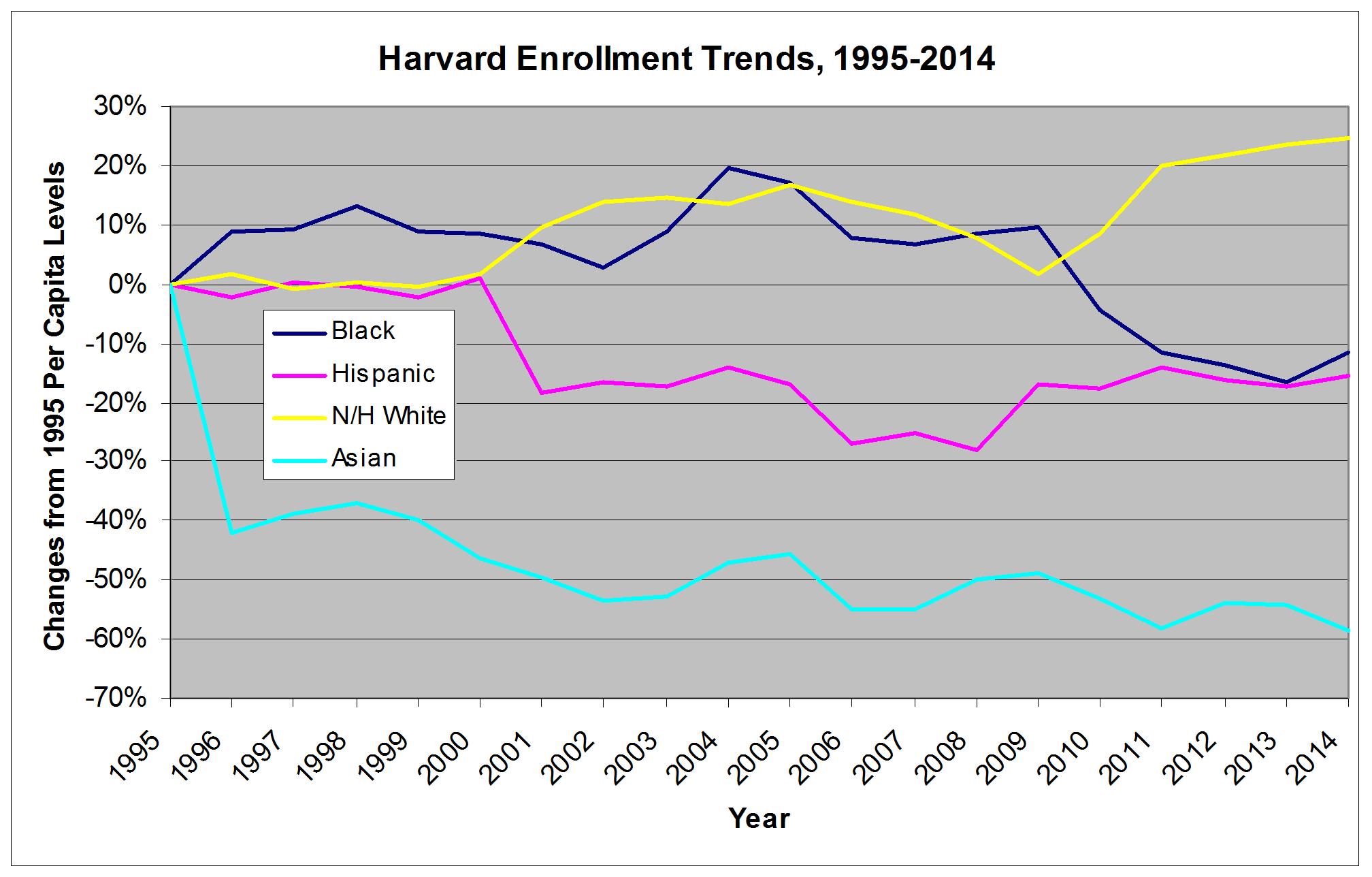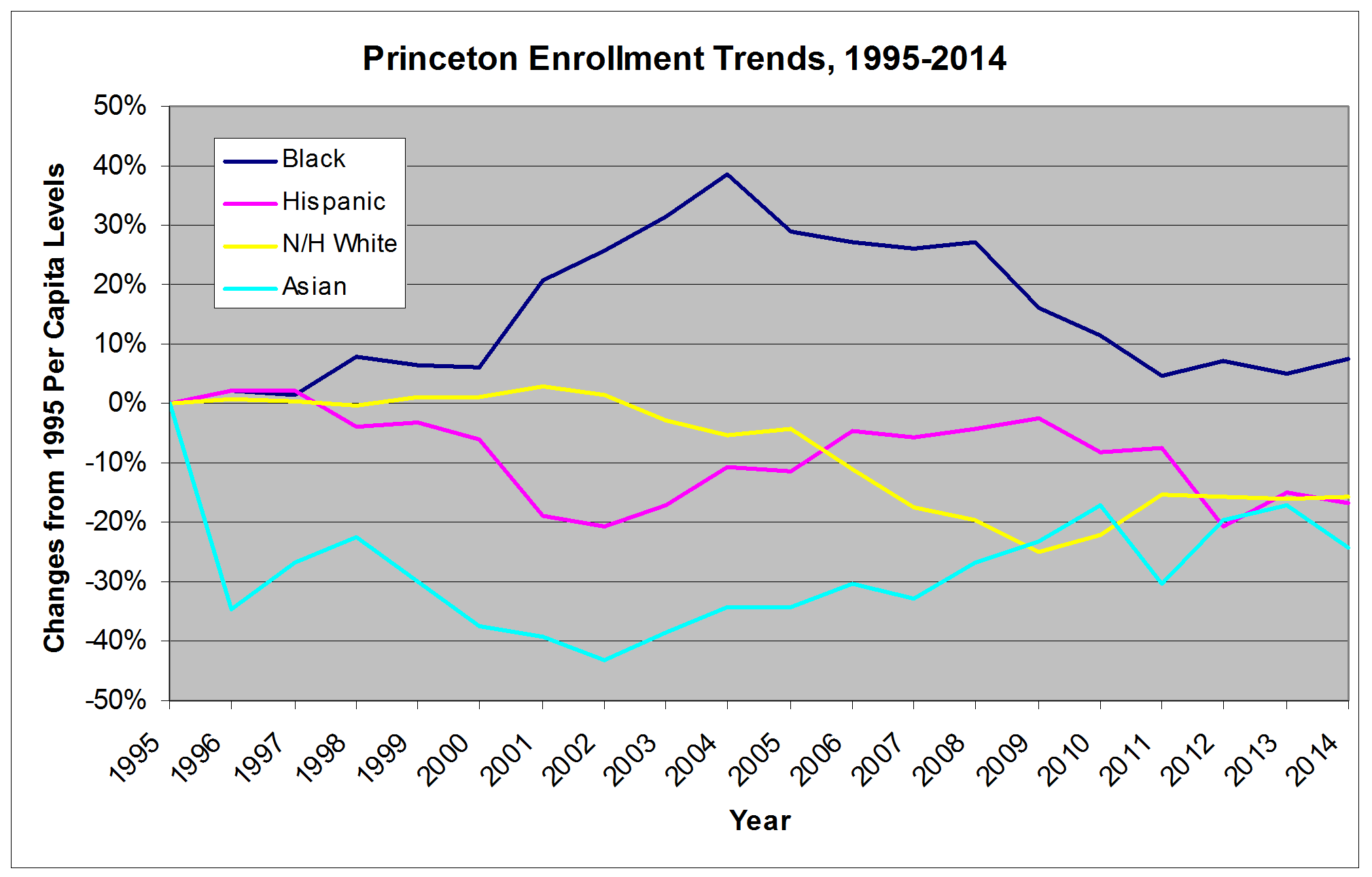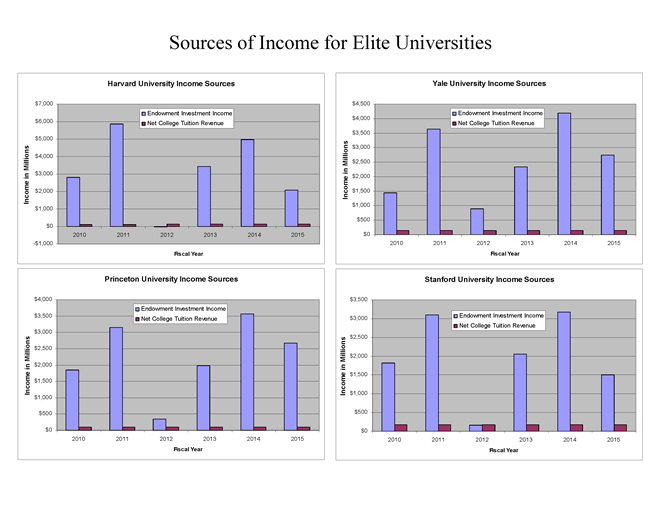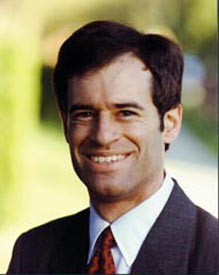I’m willing to take clear stands on issues, including some controversial ones, regardless of ideology or political orientation. Maybe you’ll agree with me and maybe you’ll disagree with me, but at least you’ll know what I believe.
As a U.S. Senator, I’ll carefully listen to both sides of every issue, do my own research, and support the policies that I believe are best for our country and the American people. But here are some of the major issues currently driving my campaign.
If you find my forthright stand on these controversial issues refreshing in a candidate, you can DONATE HERE—but nothing over $99!
For decades, millions of students from a Hispanic family background were automatically placed in Spanish-almost-only “bilingual education” programs, and as a result they had a very difficult time learning how to properly read, write, or even speak English.
The following year I launched the “English for the Children” Prop. 227 campaign, aimed at dismantling California’s heavily entrenched “bilingual education” system and requiring that all children be taught to read, write, and speak English in our public schools.
We were opposed by nearly all the powerful political interests in California. The Chairman of the State Republican Party and the Chairman of the State Democratic Party both opposed Prop. 227, as did all four candidates for Governor, Democrat and Republican alike, while President Bill Clinton came out to California to campaign against us. Nearly every major newspaper in the state urged a No vote, as did every major union, and we were outspent on advertising 25-to-1. Nonetheless, we won in a landslide, by the widest margin of any contested initiative since Prop. 13 in the 1970s.
Within months, most California schools began teaching their million-plus young Latino students in English rather than in Spanish, and the results were remarkable. All the major newspapers that had strongly opposed Prop. 227 began running numerous stories about how well the new system was working, how easily Latino children were learning English, and how happy their parents and their teachers were with the changes.
The founding president of the California Association of Bilingual Educators declared himself a born-again convert to English immersion, and promoted the change in the Washington Post and CBS News. The liberal Democrat who served as President of the State Board of Education followed a similar path. Within four years the academic test scores of over a million immigrant students increased by 30%, 50%, even 100%.
I launched similarly successful “English for the Children” initiative campaigns in other states, including Arizona and Massachusetts, usually winning in huge landslides. Due to my efforts, bilingual education largely disappeared from schools all across the country, with more and more states following California’s example and recognizing that intensive English instruction was the best educational approach to take with young immigrant children.
In California itself the issue had been entirely dead and forgotten for a decade or more, with almost everyone perfectly content with the new system and nearly a full generation of young Latinos having grown up learning English perfectly well as soon as they started school.
Not only do I strongly support a large increase in the federal minimum wage, but I believe that I have already played a major role in moving that issue back to the center of American politics.
Just a few years ago, raising the minimum wage was an issue almost entirely ignored by political leaders, even Democratic ones.
A large fraction of all Republicans believed that the minimum wage was an old-fashioned idea that made no economic sense, and were glad that inflation had drastically reduced its value since 1968. Even many Democrats agreed with this.
By January 2013 President Obama had unexpectedly made a hike in the minimum wage an important element of his State of the Union Address, although he was merely proposing a $9 figure, while Economics Nobel Laureates Paul Krugman and Joseph Stiglitz had dropped their long opposition to minimum wage laws, and become influential advocates.
Then at the end of 2013, I suddenly launched a $12 per hour minimum wage initiative campaign in California, generating a great deal of state and national media coverage, winning over influential centrist journalists, and allowing me an opportunity to present my advocacy in a wide variety of major publications.
Although my measure failed to quality for the ballot, my arguments won over Phyllis Schlafly and several other prominent conservative figures, greatly broadening the ideological backing for the idea. Raising the minimum wage is a natural issue for conservatives since it cuts social welfare spending and raises the value of work, while forcing businesses to pay for their own employees rather than shifting the costs to the taxpayer. And very low-wage jobs are the magnet that draws most illegal immigrants.
In direct response to my campaign, efforts were launched in Los Angeles to raise the city’s minimum wage to $15, which became law the following year. Similarly, a few weeks after my effort was launched, Sen. Mark Leno introduced a bill into the California Legislature to establish a statewide $13 minimum wage, and after lengthy political battles, this figure was eventually raised to a $15 level and signed into law by Gov. Jerry Brown in April 2016.
I helped achieve all these results without holding any political office or having any major public platform. As a Republican U.S. Senator from California I would be an extremely effective advocate for enacting a much higher nationwide minimum wage.
Solving Our Immigration Problems
Immigrants are generally fine people, but immigration is too high, causing our society all sorts of problems. As a U.S. Senator, I would propose cutting legal immigration and drastically reducing illegal immigration.
I doubt there are many political figures in California with stronger pro-immigrant credentials than my own.
When Gov. Pete Wilson began attacking immigrants in his 1994 reelection campaign, I challenged him for renomination, shocking political observers by capturing 34% of the vote as a pro-immigrant conservative Republican. Afterwards, I was a top featured speaker at the enormous 70,000 person march against Prop. 187 in Los Angeles, the largest pro-immigrant protest in America history but boycotted by virtually every other politically prominent non-Latino.
But over the last dozen years or so I’ve concluded that our national immigration levels are too high and should be sharply reduced.
Mostly due to immigration, America’s population growth rate has been the highest in the developed world, even twice as high as that of China. An exponentially growing population puts enormous pressure on our environment and natural resources while reducing our quality of life. I was born in Los Angeles in the early 1960s, when California was truly the Golden State. Since then, our population has increased by 150%, mostly due to immigration, and many things are much worse, while we now suffer from a severe water shortage.
Even more serious is the negative economic impact on most of our working population, which is forced to compete for jobs and wages with new immigrants, who are often desperate to take any job at all. I believe it’s more than pure coincidence that over the last forty years our immigration levels have been very high and during that same period the incomes of most ordinary Americans have stagnated. Probably the group suffering the most economic harm by being forced to compete for jobs with new immigrants are already established immigrants.
Substantially reducing our legal immigration rates would make sense, but such a change would have little impact unless something is also done to drastically reduce the possibility of continuing illegal immigration.
Most illegal immigrants are perfectly fine people, and many of them have established strong roots here and become part of our society. They’re hard-working and productive, and don’t commit much crime. But something must be done to prevent additional illegal immigration in the future.
The overwhelming majority of illegal immigrants come to America for jobs, and our media pundits correctly say “they take the jobs that Americans won’t.”
But the reason that Americans won’t take those jobs is that the wages are too low, and only recently-arrived illegals are desperate enough to take such terrible jobs. A much higher minimum wage would make such jobs much more attractive to native-born Americans and existing immigrants, and the job-magnet that produces illegal immigration would begin to disappear, making other border-enforcement mechanisms much more easier to implement. The government could even heavily subsidize the return of unemployed illegal immigrants to their home country.
Minimum wage laws are far easier to enforce than immigration laws, and very stiff penalties for repeated violations, even including prison sentences, would ensure almost total compliance.
Once the magnetic lure of American jobs disappears, traditional immigration enforcement measures will become much more effective and future illegal immigration will be reduced to very low levels.
By sharply reducing legal immigration and enormously reducing future illegal immigration, the economic prospects and quality of life for most existing Americans will be greatly improved, including for both legal and illegal immigrants currently living here.
So the first and most important step in solving our immigration problems is a large hike in the national minimum wage.
Cutting College Tuition
The gigantic increase in college tuition over the past few decades has condemned an entire generation of young Americans to decades of debt-servitude. As a U.S. Senator, I would propose forcing universities to cut their costs and cut their tuition.
Over the last couple of decades tuition at most public and private colleges has increased to enormous and unreasonable levels, and as a consequence student loan debt now exceeds $1.2 trillion dollars, inflicting huge financial burdens on young Americans.
Most absurd is the situation at Harvard and other very wealthy schools. Although the annual investment income on their enormous endowments may be twenty-five times the size of their net tuition revenue, they continue to extract enormous tuition payments from American families. Harvard and its peers have become gigantic, tax-exempt hedge-funds that run high-tuition colleges off to one side, an absurd situation.
I recently organized a slate of candidates, headlined by Ralph Nader, to run for the Harvard Board of Overseers on a platform demanding that Harvard immediately abolish college tuition. If we are successful in achieving this goal, then other very wealthy elite universities such as Yale, Princeton, and Stanford would probably soon follow.
Once our most elite national colleges have eliminated tuition, there will be enormous political pressure on the much larger number of public colleges and universities to focus as strongly as possible on reducing their tuition. During the mid-1970s, tuition at UCLA, Berkeley, and the other UC campuses was just $630 per year, but today the figure is closer to $15,000 per year, having increased many times as fast as inflation.
Many analysts have pointed to the huge growth in the number and salaries of college administrators, who now sometimes outnumber faculty members, as responsible for the huge rise in college costs. I believe our public colleges and universities, including the prestigious University of California system, should take all possible steps to reduce unnecessary costs, thereby allowing a sharp reduction in tuition.
Admitting the Iraq War Disaster
Despite being total failures, the same people responsible for the Iraq War still dominate the foreign policy of both the Democratic and Republican Parties. As a Republican U.S. Senator I would work to remove them from all national influence.
A decade ago my old friend Bill Odom, the three-star general who ran the National Security Agency for Ronald Reagan, publicly declared that the Iraq War was the “greatest strategic disaster in U.S. history”.
He was exactly correct then, and his judgment seems even more prescient today, as the rise of the Islamic State and other powerful extremist groups has led to an endless cycle of war and terrorism in the Middle East, now directly threatening European and American cities. Furthermore, prominent economists have estimated that the long-term cost of the war to our country may run as high as five trillion dollars.
Most of our recent foreign wars in the Middle East area, under both the Bush and the Obama Administrations, have been expensive and immoral foreign policy disasters. Republicans Ron Paul and Pat Buchanan were right about these issues, as were all the other experts, both liberal and conservative, who have been saying the same thing.
I don’t necessarily claim to have the solutions to the ongoing Middle Eastern crisis, but nothing useful can be accomplished until we admit that the Iraq War was a total disaster and absolutely not in our national interest. Today, the exact same individuals who promoted the war still absolutely dominate the foreign policy of the Republican Party and are also very influential within the Democratic Party. Until we completely repudiate them and their dreadful mistakes, we will not be able to move forward.
A few weeks ago in a Republican presidential debate, Donald Trump strongly denounced the Iraq War and the lies of the Bush Administration that promoted it, sending shock waves throughout the Republican Party establishment. Just days later, Trump won an overwhelming landslide victory among the Republicans of ultra-conservative and pro-military South Carolina, demonstrating that “a silent majority” of ordinary Republican voters may understand what most of their leaders do not.
I am very encouraged by these developments and hope that other Republican leaders may find the courage to take the same position.
Opposing Affirmative Action
Affirmative action is unfair to white people, Asian people, and everyone else. As a U.S. Senator I would propose completely dismantling it.
I’ve been totally opposed to Affirmative Action for forty years because I’ve always consider it unfair. I came from a liberal Democratic family background, and the single biggest reason I became a Republican under President Ronald Reagan was his strong public opposition to Affirmative Action.
Over the years I’ve probably published over 100,000 words regarding Affirmative Action, possibly more than almost any other Republican policy writer. During the 1980s and 1990s, the vast majority of prominent Republicans and conservatives took positions very similar to mine.
Unfortunately, since the beginning of the 2000s, the Republican Party and most of the Conservative Movement have begun retreating on this important issue, rarely talking about it and often even supporting it under another name. President George W. Bush gave speeches advocating “Affirmative Access.”
In late 2012 I published a 30,000 word cover story, The Myth of American Meritocracy, focusing on the extremely corrupt and unfair admissions practices at our elite colleges. The article was widely praised as one of the best published that year, and inspired much subsequent political and legal effort.
One of my central findings was the very strong statistical evidence for Asian Quotas in Ivy League admissions, although these are endlessly denied by the university administrators, just like their predecessors had denied the existence of Jewish Quotas during the 1920s. The 1978 Supreme Court decision in the landmark Bakke case was based on Harvard’s claim that it did not use quotas, so perhaps 35 years of legal support for Affirmative Action has been based on fraud.
Racial quotas and Affirmative Action in general are totally corrosive and dangerous policies in a multi-ethnic society such as the United States and should be eliminated.
I believe the issue is crucial to America’s future and my position today is exactly the same as it was when I followed Ronald Reagan into the Republican Party.
Controlling the Wall Street Casinos
Because of unfair government policies, Wall Street has grown rich while Main Street has grown poor. As a Republican U.S. Senator, I would favor ordinary Americans against the interests of the Wall Street Oligarchs.
Some prominent international economists such as Michael Hudson have characterized most of our entire bloated financial services sector as parasitic on our real economy, and such an analysis sounds plausible to me.
Over the last forty years, Wall Street has gotten richer and richer while the incomes of ordinary Americans have completely stagnated, and I think there may be a connection between these two development.
And when these lucrative gambling casinos overextended themselves and faced collapse and bankruptcy during the 2008 financial crisis, the politicians they controlled, Democrat and Republican alike, rushed to bail them out with taxpayer dollars. Now they’re back to doing better than ever before, while most Americans have still not yet recovered from the Great Recession.
Economics Nobel Laureate Joseph Stiglitz has describes America as having a government “Of the One Percent, By the One Percent, and For the One Percent,” and I agree with him.
We need to return to having a government run for the interests of the American people rather than owned and controlled by financial manipulators.
As a U.S. Senator I would oppose future bailouts and support Bernie Sander’s call for a Tobin Tax on financial transactions to reduce Wall Street speculation.
Ending Our One-Party Political System
America has become a One-Party state, with both the Democrats and the Republicans controlled by the same people. As a independent-minded U.S. Senator, I would work to give Americans a real choice in Washington.
The endless foreign and domestic policy disasters of the Bush Administration directly led to the election of Sen. Barack Obama, who was almost universally perceived as Bush’s polar opposite on all issues. His vote represented a national mandate to repudiate all of Bush’s policies.
Instead, President Obama immediately reappointed Bush Defense Secretary Robert Gates to continue his management of our foreign wars, reappointed Benjamin Bernanke to run the Federal Reserve, and promoted Bush appointee Timothy Geither to be Treasury Secretary. He continued Bush’s unpopular foreign wars and financial bailouts, leading many critics to eventually speak of the Bush/Obama Administration.
In many respects, America’s political system has evolved into a one-party pseudo-democracy, in which most of our top political leaders distract the voters by noisily attacking each other on all sorts of hot-button but insignificant issues, while remaining in almost lock-step agreement on most major foreign policy and economic matters because they are in thrall to the same major donors who control them.
I’m trying to offer voters a real choice on the issues in my U.S. Senate campaign, and I will accept no donation over $99.
Knowing Where I Stand
I’ve published a half million words on public policy issues, and everything is online and searchable. Read my writing and you’ll know where I stand.
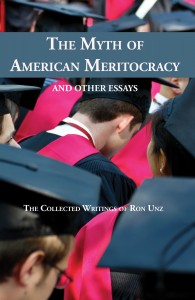 Most candidates running for office and other politicians have talking points or position papers prepared for them by their staff, which are often based on polling results, focus groups, or the views of their political consultants. Sometimes they understand what they’re saying, but many times they don’t. And as the polls and the consultants change, their positions often change as well.
Most candidates running for office and other politicians have talking points or position papers prepared for them by their staff, which are often based on polling results, focus groups, or the views of their political consultants. Sometimes they understand what they’re saying, but many times they don’t. And as the polls and the consultants change, their positions often change as well.
I’m not a politician but over the last twenty-five years I’ve published many hundreds of thousands of words of articles and columns on all sorts of issues, including controversial ones, and in nearly all cases, what I’m saying today is very similar to what I was saying in the early 1990s. Therefore, it’s unlikely that I would suddenly change my positions if I were elected to the U.S. Senate.
All my writing is online and searchable, so that anyone who wants to find my position on an issue can easily do so.
My most important articles have also been collected together in a 700 page book, which includes a very comprehensive index. Just look in the index, read the text, and you’ll discover my opinions.
Exploring My Background
Over the years there have been several major profiles of my activities and background in the major media.
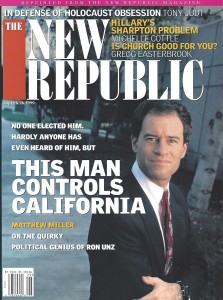 This Man Controls California
This Man Controls California
Ron Unz’s Improbable Assault on the Powers That Be in California
The New Republic, Monday, July 19, 1999, Cover Story
The California Entrepreneur who Beat Bilingual Teaching
The New York Times, Sunday, June 14, 1998, Front Page
Hooked on Politics
The Los Angeles Times, Thursday, July 16, 1998
Ron Unz, Swim Instructor
The Economist, Saturday, May 2, 1998
Considering the Opinions of Others
I’ve been well known for decades to prominent journalists and academics, and they’ve formed a clear opinion of me.
I’ve never held elective office, but I have organized and led numerous major political campaigns over the years and also written a great deal on public policy issues, and my qualifications for serving in the U.S. Senate must largely rest on that background.
When I published my collected writings last year, several prominent academics and journalists contributed some very kind and generous remarks about my work and my activities, which I provide below.
With high intelligence, common sense, and advanced statistical skills, presented transparently and accessibly, Ron Unz has for decades been addressing key issues in a rapidly changing America, enlightening us on the implications and effects of bilingual programs in American schools, clarifying the issues around crime and immigration so often distorted in political and popular discussion, placing the question of an increased minimum wage effectively on the national agenda, and addressing most provocatively the issue of affirmative action and admission to selective colleges and universities, revealing some aspects of this ever disputed question that have never been noted or discussed publicly before. He is one of our most valuable discussants and analysts of public issues.
—Nathan Glazer, Professor Emeritus of Education and Sociology, Harvard University, and author of Beyond the Melting Pot.
Few people on the planet are smarter than Ron Unz or have more intellectual curiosity. This fascinating and provocative collection of essays explores a remarkable range of topics, many of them high profile, some of them arcane. Unz’s analysis is always serious and invariably challenges prevailing wisdoms, which is to say there are a lot of controversial arguments in this book. No one is likely to agree with every one of his conclusions, but we would be better off if there were more people like Ron Unz among us.
—John J. Mearsheimer, the R. Wendell Harrison Distinguished Service Professor of Political Science at the University of Chicago, and author of The Israel Lobby.
Ron Unz is a brilliant essayist. His interests run from ancient history and black holes to contemporary issues like racial quotas and the minimum wage. He moves swiftly to the heart of a subject with cogent analysis and limpid argument. This collection of essays sparkles with unexpected gems ranging from critiques of the mainstream press to appreciation of dissenters from common wisdom such as General Bill Odom and Alexander Cockburn. In every paragraph of these essays the reader enjoys a penetrating intelligence at work.
—Nicholas Wade, former writer and editor for The New York Times, and author of Before the Dawn, The Faith Instinct, and A Troublesome Inheritance.
Over the past two decades as an original thinker and writer Ron Unz has tackled complex and significant subjects such as immigration, education, economics, race, and the press, pushing aside common assumptions. This book brings together in one volume these pieces from a variety of publications. Unlike other essayists on culture and politics, Unz shreds ideology and relies on statistical data to support his often groundbreaking ideas, such as his 2010 essay on “The Myth of Hispanic Crime.” And his 2014 efforts to put a $12 an hour minimum wage bill before California voters is an example of how the action of an individual can draw public attention to an issue he believes is necessary for the economic health of the Republic. Anyone reading this book will learn a great deal about America from an incisive writer and scholar who has peeled back layers of conventional wisdom to expose the truth on issues of prime importance today.
—Sydney Schanberg, Pulitzer-Prize winning former reporter and editor for The New York Times, whose story inspired the 1984 film The Killing Fields.
Provocative and fearless, sometimes infuriating, and quite often, persuasive. And when American’s low-wage workers get their coming big raise, the apostate conservative Ron Unz will deserve a decent share of the credit.
—Prof. James K. Galbraith, author of The End of Normal and Welcome to the Poisoned Chalice: The Destruction of Greece and the Future of Europe .
 RSS
RSS




 This Man Controls California
This Man Controls California


